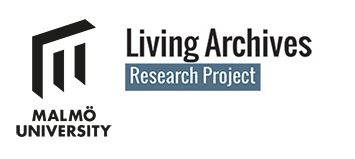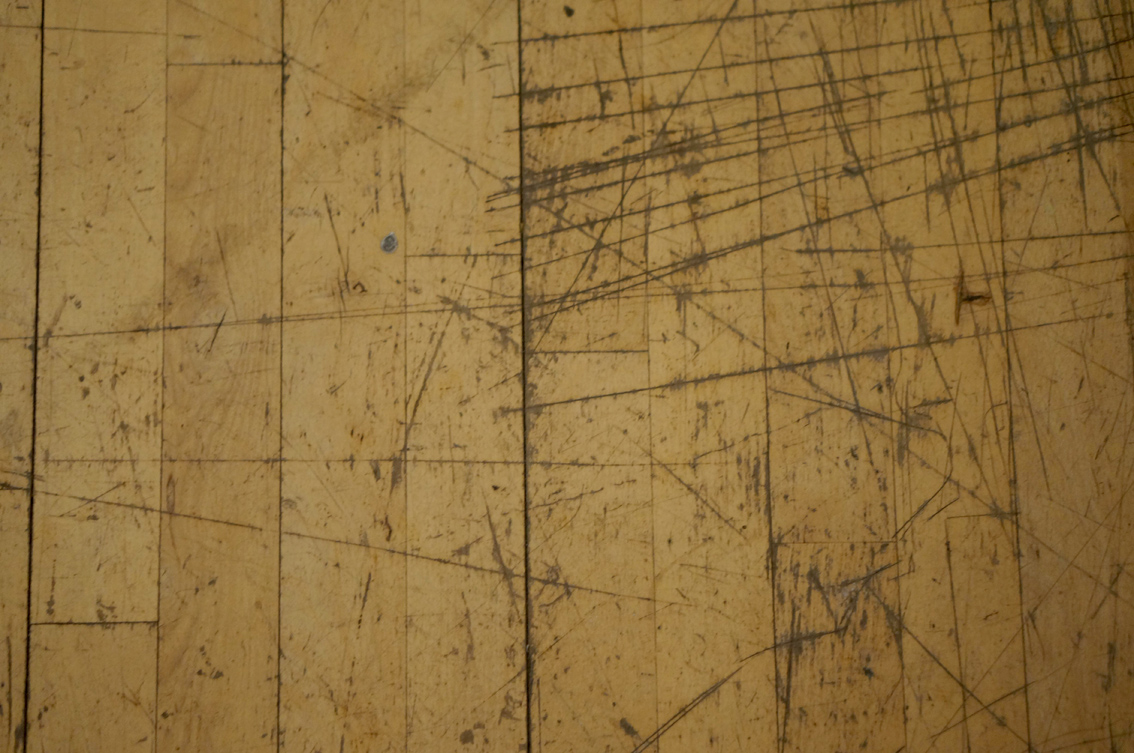
On November 3, members of the Living Archives research project took part in the art and science festival AHA in Göteborg.
The goal of this annual initiative is to investigate the borders between art and science through workshops, panel discussions, presentations and experiments. The poetics of numbers was this year’s theme spanning diverse events distributed in the space of the Architecture department of Chalmers University.
Our group proposed to work with the concept of re-enactment in a form of a 24-hour performance. We asked, if poesis can be seen as actions that transform and continue the world, and if numbers are constraints within which it is possible to find space and meaning, then what might happen in 24 hours of archival re-enactment?
During these 24 hours, each of us, whether in smaller groups or individually, got immersed in answering this call by creatively and reflectively deploying the constraints and affordances of our own bodies, technological devices and the space we were assigned with. While spending most of the time on our own, at times we would gather together to perform, exercise, play and exchange thoughts. Our actions resulted in a series of, in some cases spontaneous and other times pre-planned, interventions, games and choreographies. The very last hour of our actions was open to the public. Below are some of the archival traces and thoughts from the event.
Video: AHA Festival 2015 Documentary. Starting at 5:29, the Re-enactments section.
The memory game
Elisabet M. Nilsson and Veronica Wiman
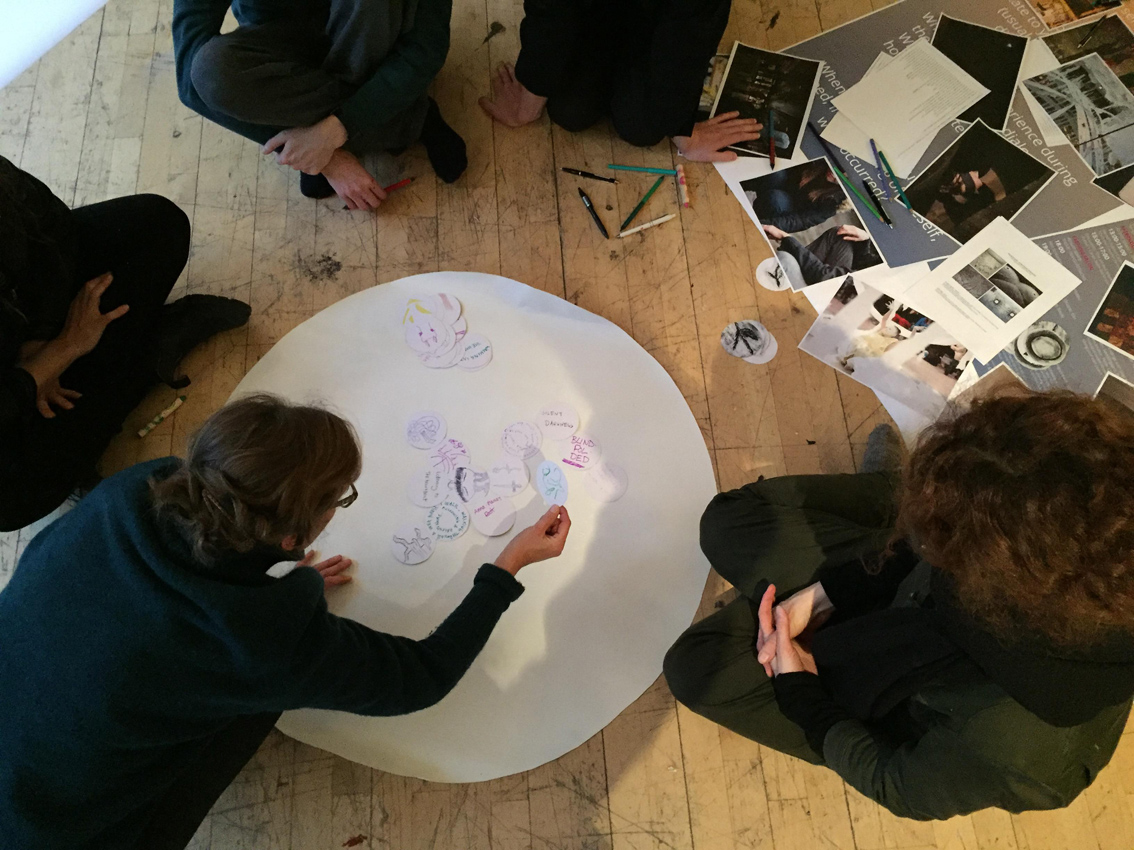
Memories from last year’s festival (CC:BY-NC)
The Memory Game is a card game and an archiving practice designed to work as a platform for dialogue, and a framework for collecting, storing and sharing memories and cultural heritage.
As part of our participation in the AHA festival, the Memory Game was played at two occasions. At the first gaming session the players were asked to relate to a selection of archival traces stored in the AHA festival 2014 archive. As expressed by one of the players, the gameplay turned out to be more of a “poetic metadata tagging” of the archival fragments presented to them rather than an associative play and act of performing memories.
At the second gaming session (15 hours later) the players were asked to share their memories and experiences from taking part in this very performance. At sunrise we gathered around the game for a second round of play. The players took a card and wrote or drew their experiences from participating in the performance. All cards were collected, shuffled, and then picked by the players, read out loud and connected to someone else’s words or drawings. Through the game we formed a joint story, a poem in eight verses giving a glimpse of our experiences of being together for the past 22 hours.
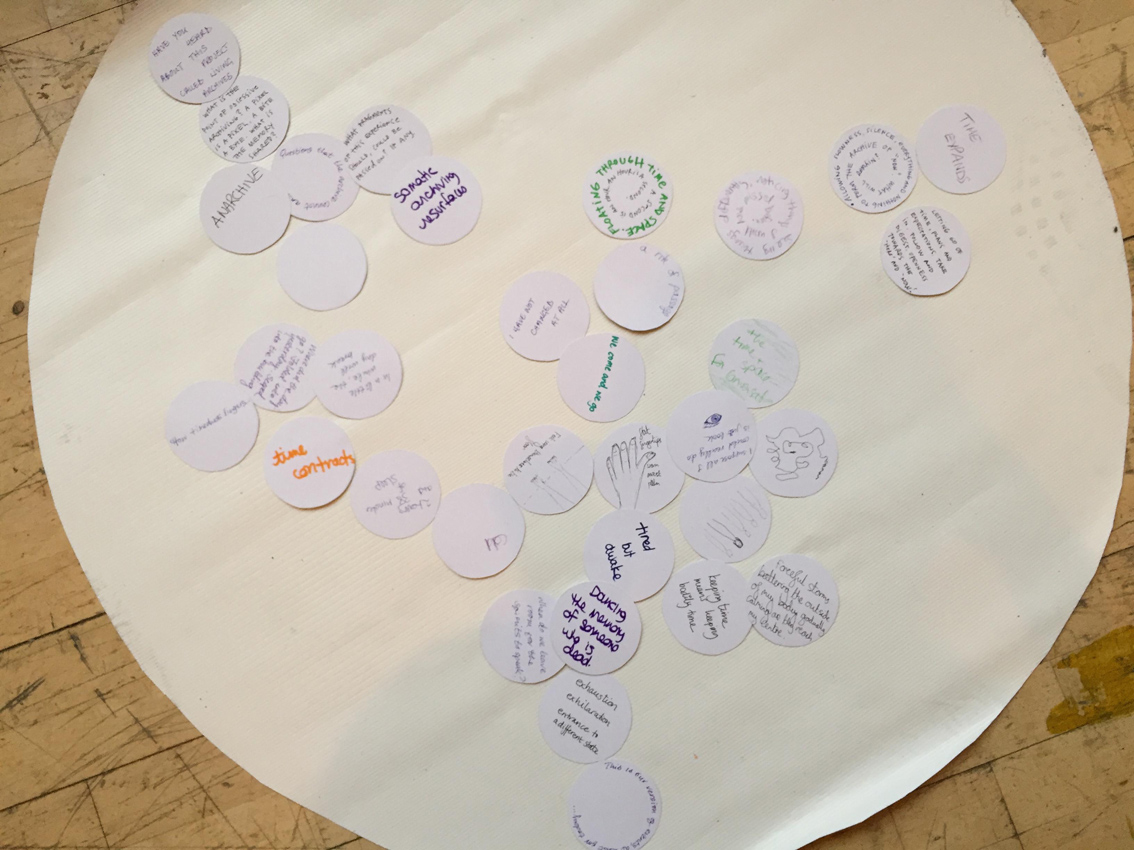
The poem (CC:BY-NC)
Have you heard about this project called Living Archives
What is the point of obsessive archiving?
A pixel is a pixel, a byte is a byte.
What is the memory shared?
Anarchive
Questions that the archive cannot answer …
Tired but awake
Dancing the memory of someone who is dead
When do we leave room for the spirits to speak?
Exhaustion, exhilaration
Entrance to a different state
Floating through time and space
A second is an hour
An hour is a second
A rite of passage
We come and we go
I have not changed at all
How tiredness lingers
Where did the day go?
Folded into yesterday
Seeped into the building
In a little while, the day will break
Time contracts
2 hours and 38 minutes of sleep
Cold
Feet icing themselves to the floor
The time and space for conversation
I suppose all I could really do is just to look
Forceful storms battering the outside of my body, gradually calming as they reach my centre
Keeping time means keeping bodily time
Letting go of time, plans, and expectations
Take in, follow and digest
Openness towards the “here” and “now”
Time expands
Allowing slowness, silence, everything and nothing to form the archive of “now”
What will remain?
What fragments of this experience should, could be passed on?
If any.
Somatic archiving resurfaces.
The Memory Game is developed by the Urban Archiving project in collaboration with the artist collective Raketa. The original idea is to play it together with urban community members as a way to access untold stories, and to visualize the social fabric of a community or neighbourhood in an urban area.
» Also read The Smell of Urban Data: Urban Archiving Practices Beyond Open Data
Self-curating the archive
Nikita Mazurov
The aim of this installation was quite simply to demonstrate through praxis that one can create a self-curated media archive of one’s own without any corporate reliance both safely (via wholesale drive encryption) and immediately (done in a single day).
With the increasing popularity of video streaming services such as those offered by Netflix and Hulu, media archival enters a highly perilous state: not only are the subscribers of said services shackled by the gravely limited availability of these services–with the provision of content being impeded by licensing agreements and other potential filters which are the logical byproduct of giving up the freedom of self-curation to third parties–but subscribers are further tethered by the inability to save the original content for later viewing. Once the subscription ends, access to the content likewise officially ends. Reliance on singular corporate providers for media archival is dangerous, because control over the selection and archiving of the content is taken out of the hands of the users and obfuscated behind tiers of legal and corporate impediments to unbridled archival practices.
During this installation, media files were downloaded from bots in an Internet Relay Chat chatroom or channel onto an encrypted hard drive. A total of roughly 120 gigabytes was downloaded in a span of 24 hours, totaling somewhere around 80 films, two dozen TV show episodes, and a dozen audio albums and ebooks. This content was downloaded without a paid subscription to any sort of streaming service, but instead via a distributed peer-to-peer (P2P) filesharing mechanism, thus showcasing the viable potentiality of a self-curated media archive.
The content was stored on an encrypted hard-drive (using the Truecrypt software) due to the non-legal nature of the content: which is to say, the legal status of each file is unknown, and so the contents were encrypted so that their existence may not be ascertained should a legal challenge eventually arise.
The threat of so-called intellectual property to media archive creation is thus here easily side-stepped, as one would perhaps similarly step around a piece of dog shit on the sidewalk, by freely downloading a trove of media content and creating the potentiality of a plausibly-deniable encrypted archive thereof. The point of the installation ultimately being to showcase that anyone can likewise do so, bringing about the surefire destruction of the attempted corporate stranglehold over archive creation and showcasing that one can cancel one’s Netflix subscription, and start downloading!
Re-enacting the once captured
Maria Engberg and Temi Odumosu
What kind of archive, and archiving, is this?
How is this worth anything as a process?
Working with the photograph projected onto bodies, living bodies, creates on the one hand a three-dimensional space that is eerily in tune with the photographic world only captured in 2D. A milk pail regains a rotund shape, a hand feel less than flat lying against folds. Faces however are harder to capture and what happened instead was an intricate doubling, overlaying and erasure—by turns—of the photographed face with the projected-onto-lit-up face. When Temi bent down slightly, the black face of the woman with the bottles appeared clearly, staring back at me from the canvas of skin, her black skin coming back more acutely. This was a moment of realization that we were indeed, at that point, engaging in re-enactment. But what kind of re-enactment? What kind of archive were we creating as pictures and videos were taken of our process?
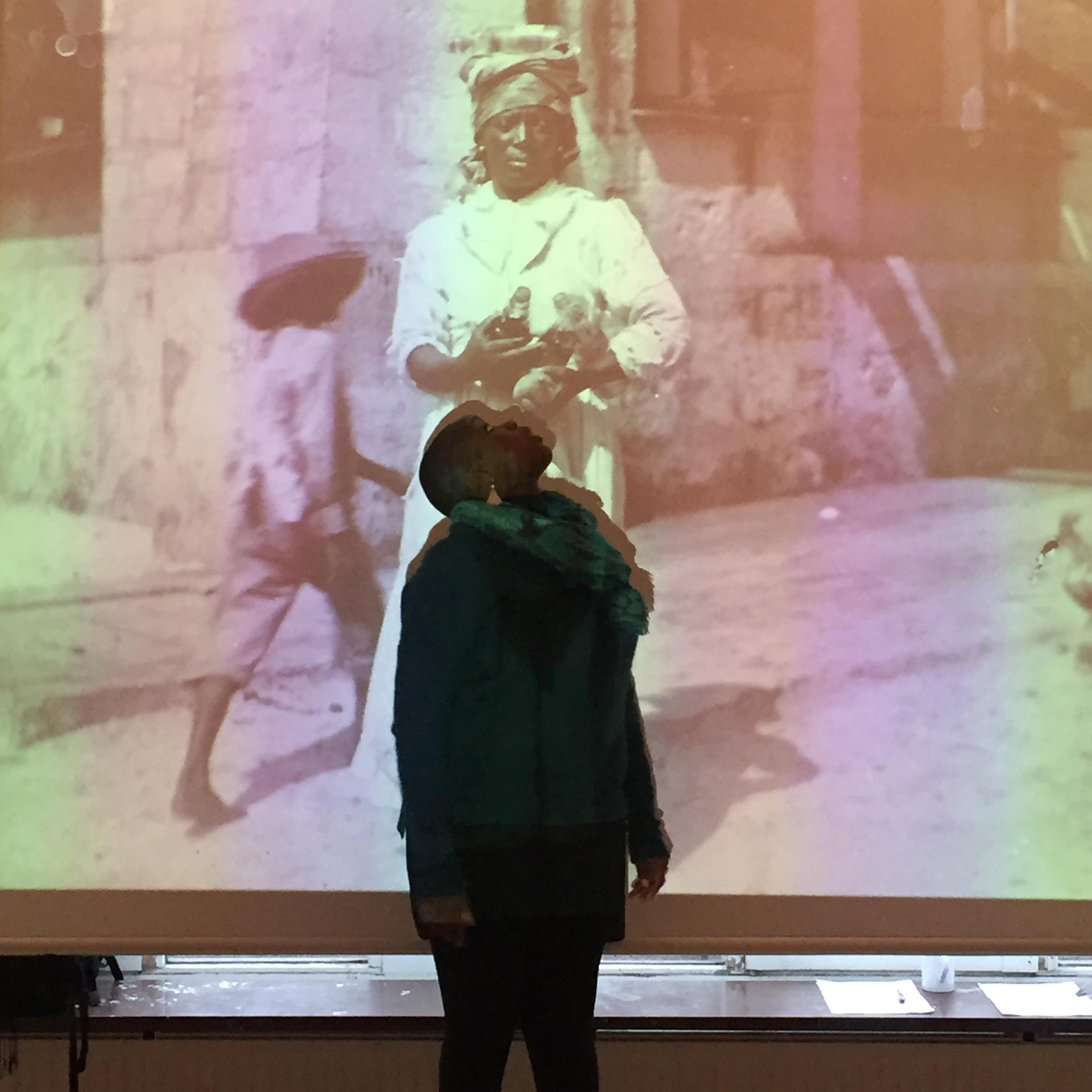
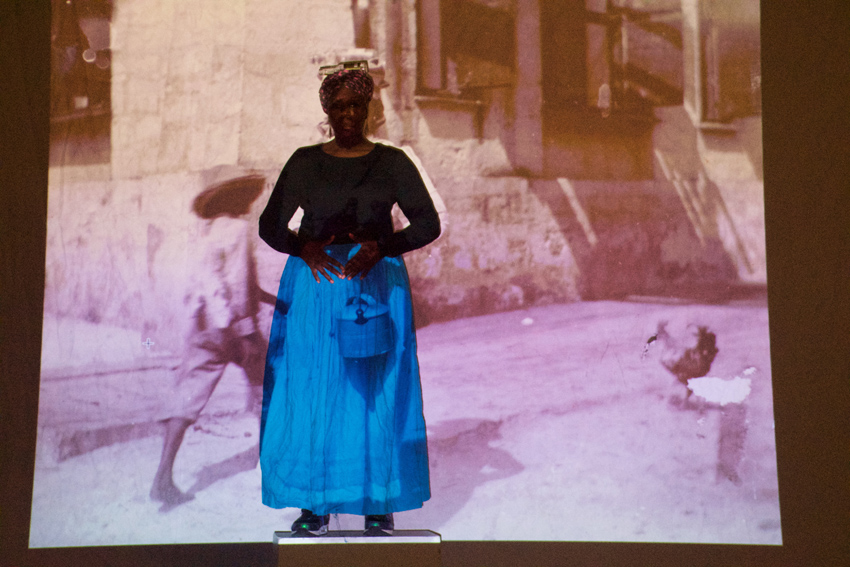
Constrained witnessing—Witnessing constraints
Jacek Smolicki
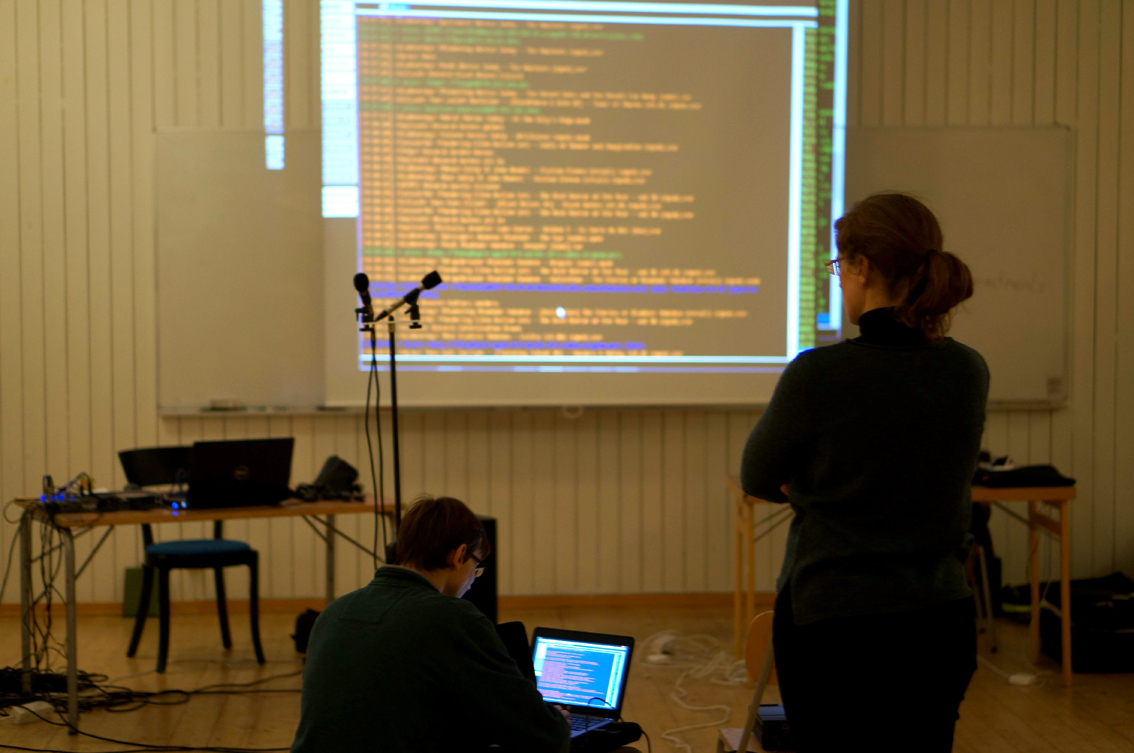
A microphone witnessing our 24-hour performance was activated to capture a minute of sound, every hour on the hour.
Like a geological stratum, each minute forms a layer, a sediment of the particular moment.
The past minute does not fade out completely. Instead, while being looped, it remains active.
It constitutes a background for the minute to come, partly determining the way that we are to experience it. Over time the recorded traces accumulate into an ever thicker texture, an idiosyncratic assemblage in which the fluid and incidental meet the constrained and structured …
In Tango, a short video etude from 1980, the Polish filmmaker Zbigniew Rybczyński presents us with a room that gradually gets occupied by bodies. They come in and out performing various daily choreographies such as feeding a baby, dressing up, or exchanging a light bulb. Each choreography becomes looped and repeats itself while the new one is being introduced. As a result, what we are witnessing is a highly intricate constellation of various practices taking place both in relation to one another and somewhat independently. There is a sense of a perfect synchrony and yet an uncanny feeling of things taking place with no recognition of the other in the same room. In other words, the video confronts us with a smoothly operating society where each single role maintains the general motion of the bigger system yet at the cost of a certain indifference and unawareness of the other components.
For the AHA festival in Göteborg, I decided to use a similar technique to construct a constrained sound recording evolving throughout the timespan of 24 hours. However, my goal with using this technique was rather different. Noticing that much of the vibrancy of our discussions either completely vanished in the air or got restrained by the linear confines of the written text, my idea was to use the constrained sound recording primarily as a way to increasing the chance to capture the said vibrancy. The microphone installed in the middle of the room, where we were spending 24 hours working on different archival projects, was activated by me every hour for one minute. Whatever was happening in the room at that time was being captured. Whatever was going on during these particular minutes received a chance to make an imprint on the final composition, the final archival trace.
Similarly to Rybczyński’s choreographies, in our composition, every minute is eventually set in a loop mode creating an ever intensifying texture consisting of audible traces of activities, conversations, movements, breathings and incidental squeaks filling the room at the time of recording.
Yet, in contrast to Rybczyński’s strategically planned and meticulously crafted Tango, the outcome of our recording of 24 hours of the life of the Living Archives group presents the listener with an unstructured and rather asynchronous assemblage of voices and gestures where serendipity, chance and respect to each individual rhythm is given priority. While listening to the final composition we encounter an assemblage that accommodates plurality of voices and approaches which do not submit to one, unified grid. These voices and approaches do not remain harmonious over the whole period of time, but rather constitute micro-temporarily synchronous situations in which the collective unites in order to allow further pluralization.
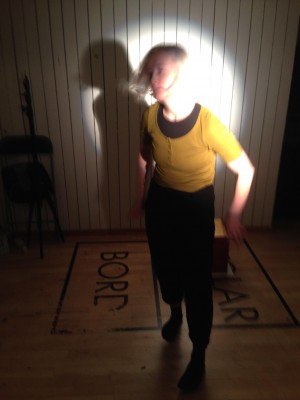 Re-embodying
Re-embodying
Sarah Homewood
I began the performance feeling grateful to have the space and time to engage again with my body as an expressive and malleable tool. It felt like escapism to dive into last year’s material and archive it through embodiment. I took the photographs of attendees from the previous year and let myself pour my limbs into their images. I felt as if I was a ghost, or a screen being projected upon. I made judgments about the people and faces in the photographs and allowed those judgments to be voiced, unchallenged and unconcerned about what the truth really was. After a little sleep I woke changed and regretted my rough handling of those I had embodied. My knowledge of them had migrated from a superficial, muscular understanding to a deeper, vibrating, bone and organ sense of who they were and what they had experienced. I also discovered, unearthed, and gift-wrapped a love story.
Unusual flow of time
Maria Engberg
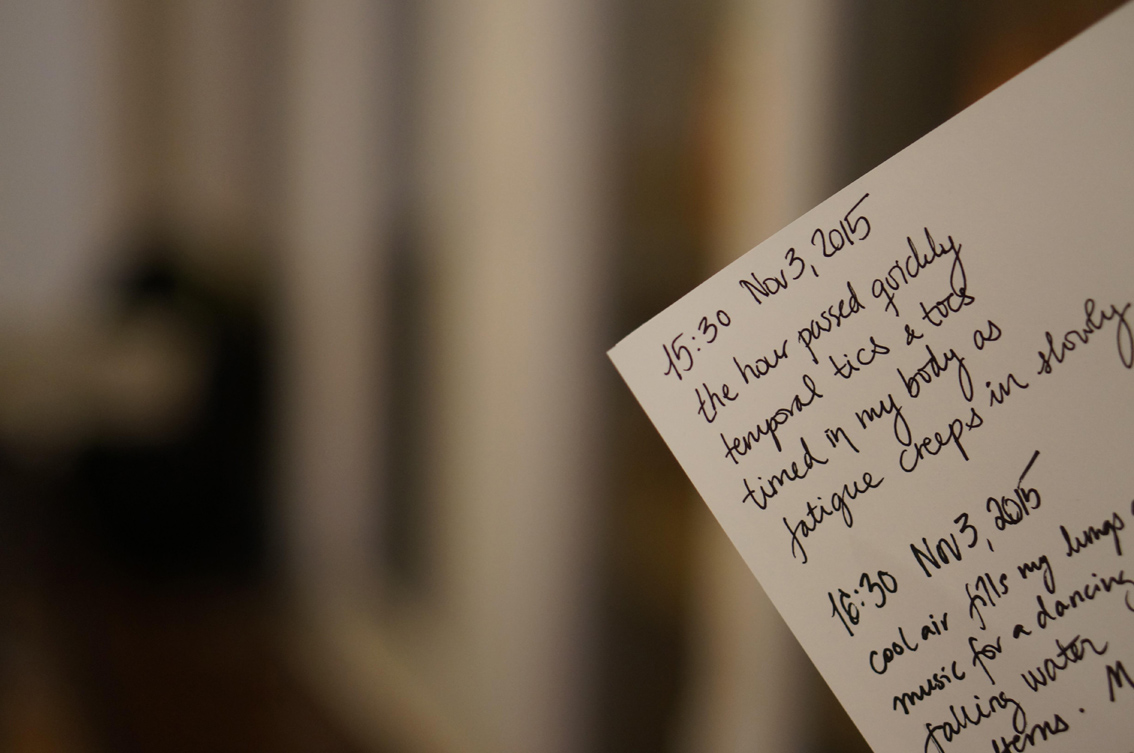
24 hours to be turned into a separate entity in the usual flow of time, cordoned off for a particular activity, a specific frame of mind, seemed like a daunting task. A challenge even. The activity was daunting as well: re-enacting that which others had thought, written, performed, or recorded while subjecting ourselves to a confined space, lack of sleep and an intense period together. I decided to record thoughts and visions throughout by writing and taking photos each hour that somehow would reflect where my mental and physical states were at that time. This is some of that material.
13:35 – November 3, 2015
exhilarating, exciting, exploratory
her flowing gestures
open/slice the space
in front of, for me.
14:20 – November 3, 2015
phantasmic awe
fabric & celluloid
her face superimposed on ours
her body & hands held by mine.
20:45 – November 3, 2015
no time for reflection
as we eat, drink and wait
for the hours of silence
and sleeplessness
21:36 – November 3, 2015
as the atrium empties
we take over the space
reshuffling, re-taking
for the re-enacting
23:36 – November 3, 2015
Notes float
outward, upward
from lips and a chilled breath
in ice cold air
02:38 – November 4, 2015
Circling
talking
breathing
not sleeping, together.
